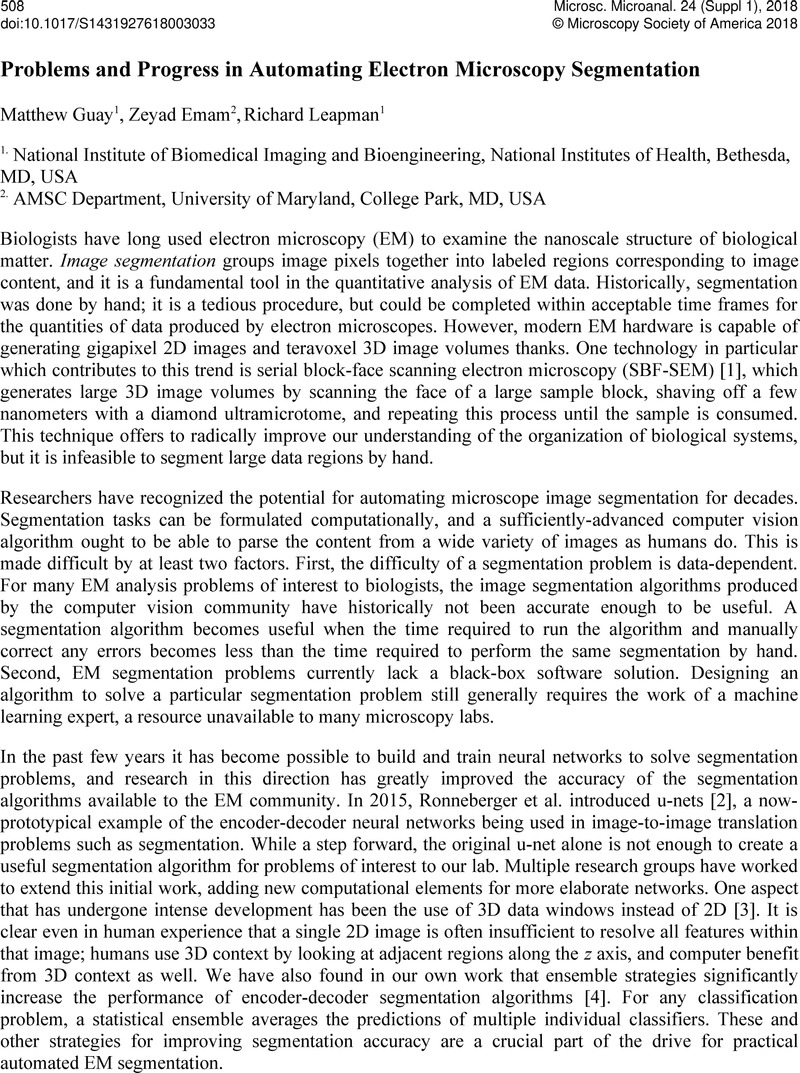No CrossRef data available.
Article contents
Problems and Progress in Automating Electron Microscopy Segmentation
Published online by Cambridge University Press: 01 August 2018
Abstract
An abstract is not available for this content so a preview has been provided. As you have access to this content, a full PDF is available via the ‘Save PDF’ action button.

- Type
- Abstract
- Information
- Microscopy and Microanalysis , Volume 24 , Supplement S1: Proceedings of Microscopy & Microanalysis 2018 , August 2018 , pp. 508 - 509
- Copyright
- © Microscopy Society of America 2018
References
[1] Denk, Winfried
Horstmann, Heinz
Serial block-face scanning electron microscopy to reconstruct three-dimensional tissue nanostructure. PLoS biology 2.11
2004
e329.Google Scholar
[2] Ronneberger, Olaf, Philipp, Fischer
Brox, Thomas “U-net: Convolutional networks for biomedical image segmentation.” International Conference on Medical image computing and computer-assisted intervention. Springer, Cham, 2015.Google Scholar
[3] Qicek, Ozgun, et al
“3D U-Net: learning dense volumetric segmentation from sparse annotation.” International Conference on Medical Image Computing and Computer-Assisted Intervention. Springer, Cham, 2016.Google Scholar
[4] Guay, Matthew D., et al
Neural Network Ensembles Will Enable Teravoxel Image Segmentation for Electron Microscopy. Biophysical Journal 114.3
2018
343a.Google Scholar


